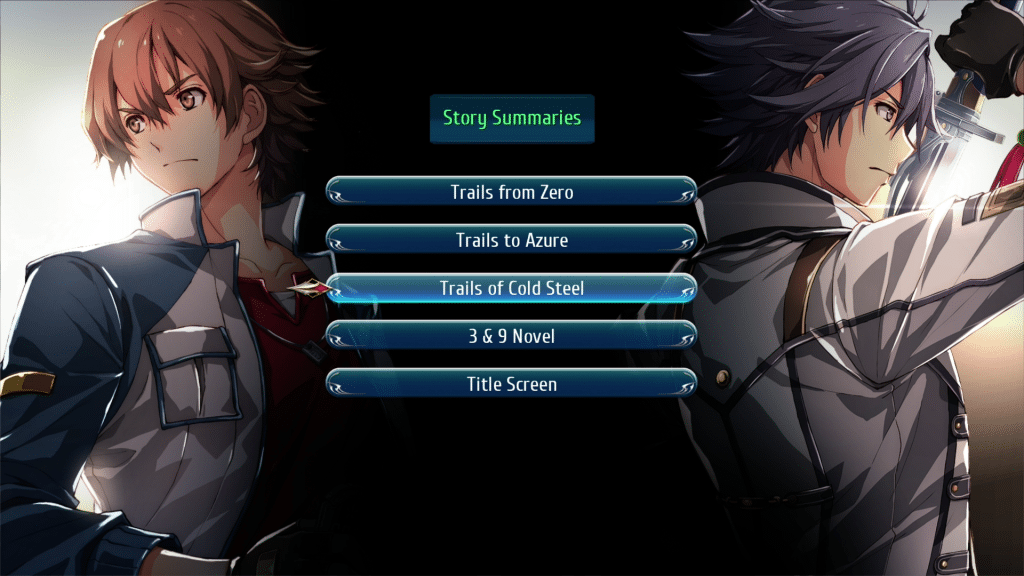

Over the years, The Legend of Heroes series has remained consistently good. Most of this is due to their intricate and deep narratives that quickly grab players’ interest without letting go. This is especially true with The Legend of Heroes: Trails into Reverie, as it concludes the Crossbell and Erebonia story arcs and introduces players to the next set of adventures. With so much riding on this adventure, does it meet expectations, or is it an underwhelming entry in an otherwise fantastic arc?


As mentioned, The Legend of Heroes: Trails into Reverie concludes the Crossbell (Zero/Azure) and Erebonia (Cold Steel) story arcs. Due to the complexity of these games, I would suggest at least playing through the Crossbell titles, as this will enhance the core experience. These summaries are surprisingly detailed for those without time or just wanting a refresher. It won’t tell you everything, but these are more in-depth than most recaps. All of this is important as The Legend of Heroes: Trails into Reverie hits the ground running like other titles in the franchise.
It takes place after the events of The Legend of Heroes: Trails of Cold Steel IV, with the remaining hostile forces being dealt with. While it looks like peace will finally come over the land, there is more to the lingering resistance than meets the eye. As a result, the heroes need to fight to defeat their leader in a narrative that heads in a fascinating direction that hints at events set to occur in later titles.
While this is an admittedly vague overview of the narrative, exploring the concept without understanding the world is hard. This makes the summaries important, as newcomers will be lost in seconds. Despite this approach to narrative, gameplay begins with a lot of hand-holding.
At its core, The Legend of Heroes: Trails into Reverie is a reasonably typical turn-based RPG. Anyone with previous experience will know what to expect, and those without will quickly understand. Like most newer games, enemies appear on the overworld and can be attacked for an advantage in combat.
When a battle begins, players will have a couple of options to plan their attack. These include Arts (magic), Crafts (special attacks), regular attacks, and S-Craft (ultimate attacks). Most fights will come down to manipulating the field and/or knowing how to deal with a specific threat. Bigger enemies are typically best handled by breaking them first, whereas small foes usually are weak to something that quickly removes their threat.
All relevant information can be viewed on the attack screen to make things easier. Moves that an enemy is weak will directly mention this with a color indicating severity, just like reading the description will explain how much break damage an attack does. It’s helpful, even if most fights can be bested with little effort.
Beyond this, there are also Linked moves, which are conditional actions. These are surprisingly helpful, like having Lloyd block an attack instead of relating to damage alone. Critical hits will also allow players to perform another attack, just like missing will result in a counterattack if the enemy is in range. It’s a sound system experienced JRPG fans will enjoy; if you don’t, there is an auto-battle system.
Despite including an auto-battle system, it’s pretty hit/miss. Situations where the fight isn’t in your favor will often result in defeat. Likewise, major threats will laugh at the AI’s pathetic attempt to best their impressive firepower.
You’ll want to use a full range of actions during these fights. I appreciate even lower difficulties require healing, buffing, and defensive measures. This is something many RPGs neglect, so it’s nice to see. For those struggling, The Legend of Heroes: Trails into Reverie is happy to reduce the difficulty of a specific fight. It’s a great compromise to swapping difficulties or offering roadblocks players can’t get past without grinding for hours.
Outside of combat, there is a decent-sized world to explore. Stages are mostly linear paths with breakable objects holding collectibles scattered about. It’s far from the unique system, though I greatly appreciate town sections. These allow for interactions and other elements that have died off over the years.
For all the things The Legend of Heroes: Trails into Reverie does right, it still looks pretty dated. Some of this is due to how far behind NA is on these games, like the original release predated PlayStation 5, though it’s not that impressive. Fans of the franchise will be okay with it as it’s in line with the other titles. Just don’t be surprised if places are mainly empty, limited in detail, or take a bit longer to do than you’d expect.
The Legend of Heroes: Trails into Reverie: The Legend of Heroes: Trails into Reverie is what you'd expect, given previous entries. The narrative is easily the best part, which does a great job of closing out the last story arcs. Gameplay isn't revolutionary for the franchise, yet that is far from a complaint. It would be nice to see some improvements in graphics/performance, but other than that, it's a solid experience fans will likely love. – Grant
[Editor’s Note: The Legend of Heroes: Trails into Reverie was reviewed on PlayStation 5, and a copy was provided to us for review purposes.]
In it's quarterly investor presentation, Rockstar parent company Take Two Interactive has confirmed that GTA…
According to Ubisoft's Nicolas Lopez during a GDC presentation, it would take 2 TB of…
Project Rustbound has the possibility to be a huge PC game. The developers behind it…
Syberia Remastered has been finally announced, and its coming to PC in 2025. This is…
Fate has been running for decades now, making TYPE-MOON into one of the biggest doujin…
Its long-awaited sequel, Hollow Knight: Silksong, can come out as late as June 6, 2025,…